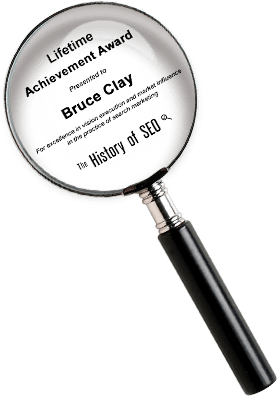How Do I Identify and Fix Technical SEO Issues Holding a Site Back?

Technical SEO is the foundation of an SEO program that helps to ensure a website is accessible, fast and ultimately optimized for search engines and website visitors.
So identifying and fixing technical SEO issues involves a thorough and methodical approach. This approach addresses obvious and hidden issues that can impact a site’s performance and rankings.
- What I Think
- Quick Guide to Finding and Fixing Technical Problems
- The Technical SEO Action Plan
- Contact Us
- Quick Solutions
- About Us
What I Think
Many websites struggle to get the visibility they need because of technical issues.
From broken links to slow load times and everything in between, simple and complex tech issues prevent search engines from crawling, understanding and indexing webpages properly.
And this can translate to missed opportunities in search. In my experience, a thorough technical audit is the only way to reveal areas for improvement.
So regular monitoring and updating of technical SEO is important to maintaining site health and preventing issues from accumulating over time.
This helps to ensure that a website stays aligned with the latest search engine requirements and user expectations.
In my view, investing in ongoing technical SEO maintenance is a critical step for any business looking to stay ahead.
Technical SEO is not just about addressing problems. It is about creating a seamless experience for users of search engines and a site.
Quick Guide to Finding and Fixing Technical Problems
Here are a few basic steps that can’t be overlooked:
Technical SEO Audits
A deep technical SEO audit is the first step in finding issues that are impacting a site’s performance in the search results.
This includes examining key areas such as crawlability, indexability and site speed to ensure that pages are accessible and provide a good experience for both users and search engines.
Site Speed
Site speed is one of the critical factors in user experience and search engine rankings. Slow-loading pages lead to higher bounce rates, which can negatively impact a site’s engagement rates and ultimately, revenue.
Improving site speed enhances user satisfaction, and also aligns the website with search engine expectations for high-quality websites.
Mobile Optimization
Most sites today are mobile responsive, but there’s more to being mobile friendly than just that.
Ensure the site is user-friendly across all devices. This includes testing tap targets, adjusting text size and configuring viewport settings to provide an optimal mobile experience.
Beyond that, consider how mobile users want to experience a site. It’s not just a copy/paste of a desktop website.
Remember: Search engines prioritize sites that have excellent experiences across devices. This is why mobile optimization is non-negotiable in modern SEO.
Structured Data
Structured data and schema markup create additional opportunities to enhance your site’s visibility by providing context about the content on a webpage.
When you provide this additional context, it reduces ambiguity, which can lead to richer search results and increased clicks.
Ongoing Maintenance
Regularly monitoring and updating your site’s technical elements keeps performance humming and ranking potential high.
So review analytics data, conduct periodic audits and stay informed about changes in search engine algorithms.
This proactive maintenance helps to ensure that your site remains competitive.
The Technical SEO Action Plan
Here’s a 24-point checklist for technical SEO health:
- Use Google Search Console or other SEO tools to identify crawl errors and indexing issues.
- Conduct a site crawl using tools like Screaming Frog to locate broken links and other issues.
- Analyze page load times with PageSpeed Insights or a similar tool for insights on where to focus improvements.
- Compress large image files to enhance site speed.
- Enable browser caching to reduce server load times.
- Minimize JavaScript and CSS files to streamline page rendering.
- Implement a responsive design, if you haven’t already, to improve mobile-friendliness.
- Test your website on mobile devices using Google’s Lighthouse.
- Set up structured data using schema.org guidelines and schema.
- Create an XML sitemap and submit it to search engines.
- Optimize your robots.txt file to guide search engine crawlers in the best possible way.
- Use canonical tags to address duplicate content issues where applicable.
- Configure 301 redirects for outdated or removed pages.
- Review and update meta titles and descriptions to ensure they are optimized and engaging.
- Monitor Core Web Vitals scores and address performance concerns where effort and impact are considered.
- Analyze user behavior metrics to identify areas for improvement.
- Update any outdated content to maintain its relevance and accuracy, use 301 redirects where appropriate.
- Use hreflang attributes for multilingual content.
- Set up alerts in Google Analytics for significant traffic changes.
- Perform quarterly technical SEO audits and yearly deep dives to identify new issues.
- Most sites are secure today, but make sure HTTPS is implemented across your entire site.
- Remove unnecessary plugins or extensions that slow down your site.
- Test and refine interactive elements, such as forms and checkout processes.
- Partner with a professional SEO team for ongoing support and optimization.
Contact Us
If you’re ready to elevate your technical SEO, contact us today.
Quick Solutions
- How do I outperform my competitors with better technical SEO?
- How do I improve my website’s loading speed effectively?
- How do I align my teams to prioritize technical SEO and enhance collaboration?
About Us
Bruce Clay, Inc. has been a leader in search engine optimization since 1996. We specialize in helping businesses achieve online success through advanced SEO strategies, expert consultations and cutting-edge tools. Our dedication to ethical SEO practices and measurable results has earned us a reputation as an industry pioneer. Learn more about our history and services on our About Us page.
26,000+ professionals, marketers and SEOs read the Bruce Clay Blog
Subscribe now for free to get:
- Expert SEO insights from the "Father of SEO."
- Proven SEO strategies to optimize website performance.
- SEO advice to earn more website traffic, higher search ranking and increased revenue.

Comments are closed








